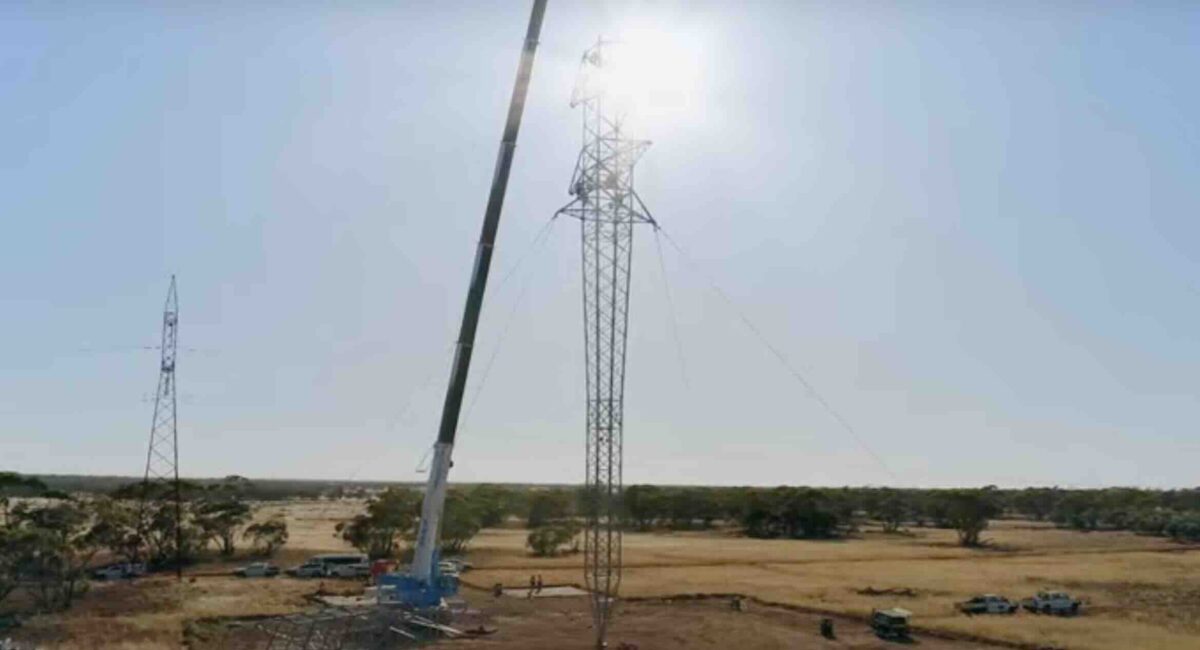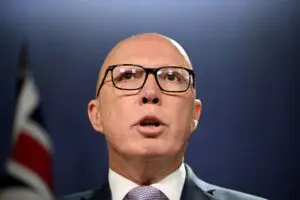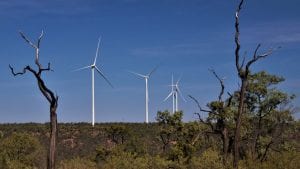One of the biggest international contractors working in the Australian renewable energy and energy network sector has reported significant losses on some of its Australian projects, blaming soaring costs for labour and logistics.
The Spanish group Elecnor, which is building the country’s biggest transmission project, Project EnergyConnect that will link South Australia and NSW, and several other key projects, says it lost €13.4 million ($A22 million) in its last calendar year from “negative margins” on its Australian projects.
Elecnor blames delays caused by the Covid 19 pandemic, global economic instability and a “disproportionate” increase in the cost of materials, labor, logistics and local costs as a result of high inflation rates.
The company did not give a breakdown in its report on which projects suffered the negative margins, and did not respond to Renew Economy’s queries.
Elecnor’s most notable project in Australia is Project EnergyConnect, the biggest transmission project in the country which has suffered delays and cost issues, particularly on the NSW side of the project.
Elecnor became the major contractor on that $1.9 billion sector after its joint venture partner Clough collapsed, another victim of the soaring costs of civil construction in Australia, and around the world.
Elecnor is also working on Neoen’s 412 MW Goyder South wind farm in South Australia – the largest in the state – as well as Iberdrola’s 144 MW Flyers Creek wind farm in NSW.
It is also working on Neoen’s Blyth Battery in South Australia, which will combine with Goyder South to supply a first of its kind “baseload renewables” contract to the giant Olympic Dam mine owned by BHP.
The cost issues have become a constant theme in its recent quarterly reports, with the latest for the March quarter repeating the statements made in the 2023 year and third quarter reports:
“In Australia, Elecnor, in collaboration with its customers, continues to work on finding solutions to develop projects whose execution deadlines were impacted by Covid-19 and global economic instability, which pushed raw material prices, labour and logistics expenses and local overheads sharply higher as a result of high inflation rates,” it says.
It describes these projects as “strategic” for Australia and says it hopes to be able to will be able to “reverse the situation that has been estimated in 2024.”
“These circumstances have led these contracts to recognize negative margins,” it says. “In this context, and with the collaboration of clients, solutions are being jointly sought to carry out these projects that are strategic for the country.”
Cost over-runs have become a familiar part of the Australian renewable energy landscape in recent years, partly due to the incredibly complex grid connection rules, but also due to soaring civil engineering costs which have plagued all industries.
And occasionally those cost over-runs – as they have been at the ill-fated Snowy 2.0 pumped hydro project – have been also the result of bad planning, bad budgeting, and bad luck.
However, the impact on contractors is rarely revealed because so few contractors and renewable energy developers are listed.
The extent of the Snowy 2.0 catastrophe only emerged at the time it did because the junior construction partner and Clough owner Murray and Roberts was listed in South Africa and was facing a financial crisis, and was obliged to tell the local stock exchange.
Glimpses of the problems in the industry sometimes emerge through other listed companies – many through the revelation of liquidated damages – but mostly the problems are unseen and unreported.
There is no suggestion that Elecnor is at some sort of financial risk from the Australian projects because the company is simply too big, with revenues in the billions of euros and interests in more than 50 different countries.
The annual report reveals only details of what the company describes as “guarantees” made to the owners of the projects that it is working on in Australia.
The biggest of these guarantees is for €78 million ($A128 million) for the Project Energy Connect transmission line. Other guarantees include €28 million for Goyder Wind Farm 1 Pty Ltd (compared to €41 million in 2022), and €17 million for Flyers Creek Wind Farm Pty Ltd, down from €20 million in 2022.
Its annual report also notes that guarantees amounting to €23 million have been provided to Blyth Battery Pty Ltd.
Project EnergyConnect was the biggest and most important project identified last month by the Australian Energy Market Operator as subject to delays, up to one year in its case for the final link from Buronga to Wagga Wagga.
The first stage of the link, from Robertstown to Buronga, has largely been completed and is expected to be energised later this year, along with a “spur line” to Red Cliffs near the Victoria border.
The rest of the project has been put back by 12 months to mid 2027, leading AEMO to identify a potential reliability gap in its 10-year demand and supply forecasts.
The Electrical Trades Union has also been expressing concern about the project, and potential cost-cutting. Late last year they released a statement identifying poor living conditions and safety standards. A union spokesperson said there were still concerns about safety standards on the project.
Renew Economy sought comment from Transgrid, which owns and operates the NSW section of Project Energy Connect, and will update the story if and when a response is provided.










